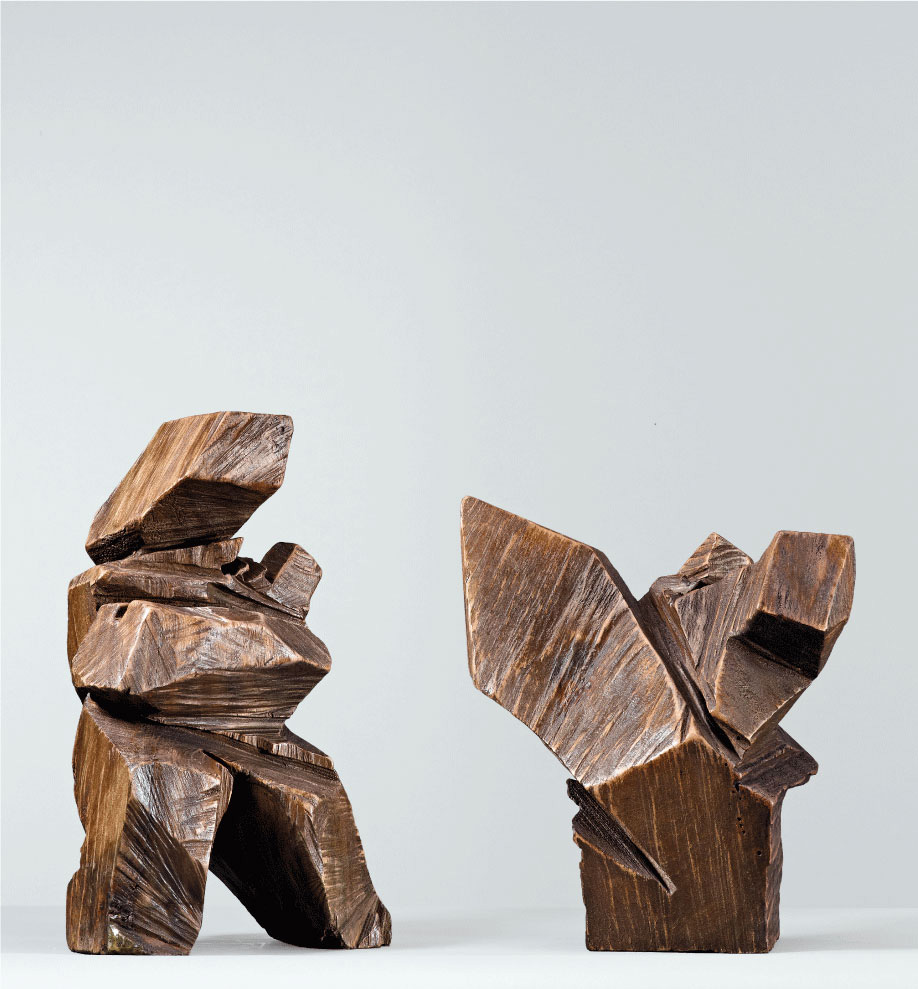|
Taichi Series - Show Boxing
|
|
1988 ; 1982 Wooden sculpture 16.7(L) x 20.3(W) x 33.3(H) cm (left) Engraved JU Ming and dated '88 (left) |
|
Estimate
8,000,000 - 12,000,000 2,078,000 - 3,117,000 269,400 - 404,000
|
|
Sold Price
6,600,000 1,709,845 220,662
|
|
|
For Ju Ming, the "Taichi Series" is the starting point of his own unique style. He expresses the vital inner force discovered in Taichi boxing in a form that immediately resonates with a profound understanding of the energy within. In the "Taichi Series", Ju creates a tension between geometric abstract forms which bring forth the active and forceful postures of the figures. This, along with the contrast between the dynamic poses and the static material, and the rough and terse finishes create a rich rhythm in the works. The sculptures also play with a colorful effect of change between light and shadow. In "Single Whip", Ju Ming found his own voice and creates works of tremendous vitality and irresistible power as he explores the pure energy of traditional Taichi Series.
The "Taichi Series" by Ju Ming can be broadly divided into two categories: those depicting individuals demonstrating their skills and postures, and those that examine the contradictory relationship between opposing forces - the twin sparring figures. With the single Taichi figures, the force and rhythm of Taichi are expressed through body movements and postures. However the nature of Taichi is such that there are two types of chi: the Yin and the Yang. These two entities share a reciprocal relationship and are united as one, creating a harmonious and powerful movement.In this "Taichi Series", he has given ultimate presentation the pith of shadowboxing yielding to dissolve attacking force, treating rigidity with suppleness, borrowing external force and complying with external orientation.
The scholar of art history in Oxford University, Michael Sullivan, said: "Taichi is also a form of ritual combat in which two figures actively oppose each other. In Taichi boxing, the participant moves so that he (more rarely she) extends beyond himself. Know your enemy as well as yourself, wrote the ancient military strategist Sun Zi, and you will be invincible!" (Ju Ming Taichi Sculptures, Hanart T Z Gallery, Hong Kong, 1993)
